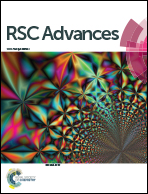Antioxidation efficiency and reinforcement performance of precipitated-silica-based immobile antioxidants obtained by a sol method in natural rubber composites
Abstract
Tetraethoxysilane-40 (TEOS) was hydrolyzed in an alkaline environment to prepare a sol precursor consisting of large amounts of silicic acid oligomers, and then the silicic acid oligomer was grafted with 4-aminodiphenylamine (RT) which was the intermediate of antioxidant-4010NA (AO) via silane coupling agent 3-glycidoxypropyltrimethoxysilane (KH-560), generating the precipitated-silica-based antioxidant (P-RT) through the condensation polymerization. A Fourier transform infrared spectroscopy (FTIR) test demonstrated that RT has been successfully grafted onto the surface of precipitated silica. Thermogravimetric analysis (TGA) results exhibited the high grafting efficiency of this sol-grafting method. The massive grafted antioxidant groups took the same role as the traditional surface modifier bis(3-triethoxysilylpropyl)tetrasulfide (TESPT). According to the results of tensile tests, the reinforcement performance of P-RT was better than that of the silica modified by TESPT in a natural rubber matrix. Oxidation induction time (OIT) tests and accelerated aging tests revealed that P-RT possessed much better anti-oxidative and anti-migratory efficiency than that of the corresponding low molecular counterpart (4010NA).


 Please wait while we load your content...
Please wait while we load your content...